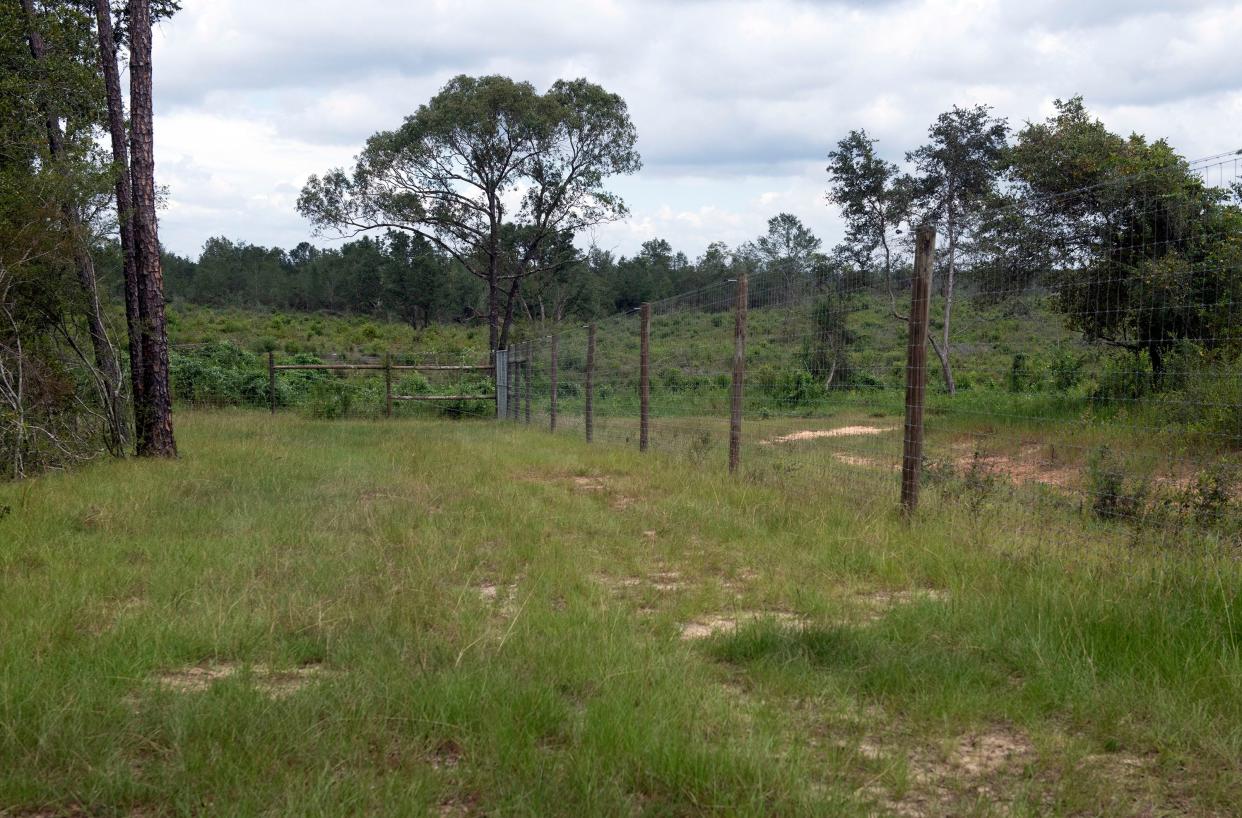6 Santa Rosa developments made use of controversial density rule before it ended Jan. 1

When the Santa Rosa County Commission decided in September it would do away with the alternative subdivision provision, and then voted to formalize the decision in October, it left open a window of opportunity for developers.
The alternative subdivision provision was created to encourage developers to include more green space – with less clear cutting and more preservation of naturally occurring wetlands − within their construction zones in exchange for building homes at higher density.
At a December meeting, Santa Rosa County Commissioner Ray Eddington expressed dismay over how many applications for development had been submitted under the alternative subdivision provision since the county voted to eliminate that particular provision from its Land Development Code.
"I've noticed every Tom, Dick ... people running in and putting applications in for that," he said. "It shouldn't be that way. We should not let them do that."
Some residents who live on agricultural land where the zoning remains one home per acre have been strongly against the provision. Residents of rural properties argued to commissioners considering LDC revisions that the higher density development headed their way will adversely affect their way of life.
Eddington pointed out in December that he was under the impression that the board had committed to grandfather in those alternative subdivision applications that had come in before the LDC revisions were passed Oct. 26, but allow no more applications to be considered.
"We should have put it on the books right then," he said. "It should have stopped right there."
Eddington requested that the board revisit the issue, but was told it could not.
"Until midnight Dec. 31, developers can legally only apply under the current LDC," Commission Chairman Sam Parker said. "That was a board vote. We surely couldn't change it today."
Since the commission made clear in September its intention to eliminate the alternative subdivision provision there have been six applications turned in to develop under it. All appear to be in Milton or north of it and would be converted from land presently zoned rural residential agriculture to accommodate the alternative subdivision zoning.
Two of the requests are for changes to be made within the 2,700-acre development known as Jubilee.
Three of the applications filed with the county's Engineering Department came after the County Commission cast a preliminary vote in September to do away with the alternative subdivision provision but before the formal Oct. 26 vote.
Related: Facing overwhelming public pushback, Santa Rosa votes against controversial rural density rule
The first Jubilee project is identified in county records as Jubilee Phase 201, which calls for 153 lots on 153 acres off Luther Fowler Road.
The second, larger project is titled Jubilee Phase 100 and combines Phases 101, 102, 103 and 104. It would divide 761 acres into 761 buildable lots near the intersection of Chumuckla Highway and Willard Norris Road.
The applications were submitted on Oct. 24.
Also submitted before the county formally passed the template for a revised LDC was an alternative subdivision application for the Rhett's Run subdivision, phases two and three, off County Road 182 in Jay. This request seeks permission to build on 123 lots contained within 285 acres.
The three projects applied for since Oct. 26 include:
Three Oaks Preserve, which would carve out 58 lots on 58 acres on the Chumuckla Highway south of Wallace Lake Road.
Spring Ridge, which would put 479 lots on 500 acres near the Milton-area at the end of Halecia Lane near the intersection of Dogwood Drive and Stewart Street.
Pine Hammock, where 200 acres would be parceled out into 199 lots on the west side of State Road 87 at Langley Street in the rear of the Pine Lake Subdivision.
Ryan Fowler, a member of a Pace family that has vocally opposed the alternative subdivision provision, pointed out at the commission's December meeting that homes within the Jubilee Phase 100 would be constructed on lots one-seventh of an acre in size. He called on the commission to consider reinstating preliminary plat reviews of Jubilee developments brought to the county for consideration.
Commissioner Kerry Smith said county leaders saw within the alternative subdivision provision some definite loopholes that an unscrupulous developer could take advantage of, such as building 1,000 homes all dependent on septic tanks.
"What this was allowing is development of huge subdivisions in the middle of nowhere," he said. "We had the opportunity to have had some pretty scary stuff. We've had nothing egregious come out yet, but I was afraid of it."
Still, he said he also believes that with some tweaks to prevent manipulation of the LDC, something like the alternative subdivision provision could be highly beneficial.
"If we can get in and tweak that thing, we have the ability to do a lot more good than bad," he said.
This article originally appeared on Pensacola News Journal: Santa Rosa alternative subdivision provision see last-minute usage

